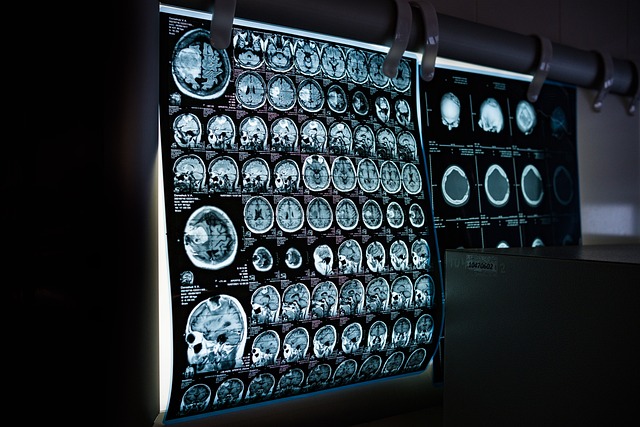Diabetes Treatment: Understanding Symptoms and Management Strategies
Diabetes is a chronic condition affecting millions worldwide, characterized by elevated blood sugar levels. This article explores the symptoms, diagnosis, and treatment options for diabetes, helping you understand when to seek medical attention and how to manage the condition effectively.

What are the common symptoms of diabetes?
Recognizing the symptoms of diabetes is crucial for early diagnosis and treatment. Common signs include:
- Increased thirst and frequent urination
- Unexplained weight loss
- Blurred vision
- Slow-healing wounds
- Fatigue and weakness
- Tingling or numbness in hands or feet
These symptoms may develop gradually, especially in type 2 diabetes. It’s important to consult a healthcare professional if you experience any of these signs persistently.
When is blood sugar considered high?
Blood sugar levels are typically measured in milligrams per deciliter (mg/dL) or millimoles per liter (mmol/L). Generally, blood sugar is considered high when:
- Fasting blood glucose is 126 mg/dL (7.0 mmol/L) or higher
- Random blood glucose is 200 mg/dL (11.1 mmol/L) or higher
- Hemoglobin A1C is 6.5% or higher
However, individual targets may vary based on factors such as age, overall health, and duration of diabetes. Regular monitoring and consultation with a healthcare provider are essential for maintaining optimal blood sugar levels.
What are the symptoms of pre-diabetes?
Pre-diabetes is a condition where blood sugar levels are higher than normal but not high enough to be diagnosed as diabetes. Symptoms of pre-diabetes can be subtle or even absent, but may include:
- Increased thirst
- Frequent urination
- Unexplained weight loss
- Fatigue
- Blurred vision
It’s important to note that pre-diabetes often doesn’t cause noticeable symptoms. Regular check-ups and screenings are crucial for early detection and prevention of progression to type 2 diabetes.
How do type 2 diabetes symptoms differ from type 1?
While both type 1 and type 2 diabetes share some common symptoms, there are key differences:
Type 1 Diabetes: - Symptoms often develop rapidly - More common in children and young adults - May cause sudden weight loss - Can lead to diabetic ketoacidosis if left untreated
Type 2 Diabetes: - Symptoms develop gradually over time - More common in adults, but increasing in children - Often associated with obesity and sedentary lifestyle - May not require insulin treatment initially
Understanding these differences can help in identifying the type of diabetes and seeking appropriate treatment.
How do you feel if you’re diabetic?
The experience of living with diabetes can vary from person to person. Some common feelings and experiences include:
- Increased thirst and frequent urination
- Fluctuations in energy levels
- Mood swings related to blood sugar changes
- Anxiety about managing the condition
- Frustration with dietary restrictions
- Concern about long-term health complications
It’s important to note that with proper management, many people with diabetes lead full, active lives. Regular check-ups, medication adherence, and lifestyle modifications can significantly improve quality of life for those living with diabetes.
What are the current treatment options for diabetes?
Diabetes treatment has evolved significantly in recent years, offering various options for managing the condition effectively. Here’s an overview of current treatment strategies:
- Lifestyle modifications (diet and exercise)
- Oral medications
- Injectable medications (including insulin)
- Continuous glucose monitoring systems
- Insulin pumps
- Bariatric surgery (in some cases of severe obesity with type 2 diabetes)
The choice of treatment depends on the type of diabetes, severity of the condition, and individual patient factors. Let’s compare some common treatment options:
| Treatment Option | Type of Diabetes | Mechanism | Potential Benefits | Estimated Monthly Cost |
|---|---|---|---|---|
| Metformin | Type 2 | Reduces glucose production | Low cost, weight neutral | $4 - $20 |
| Insulin (various types) | Type 1 and Type 2 | Replaces or supplements body’s insulin | Effective blood sugar control | $50 - $1000+ |
| GLP-1 Receptor Agonists | Type 2 | Increases insulin production, reduces appetite | Weight loss, cardiovascular benefits | $700 - $1000 |
| SGLT2 Inhibitors | Type 2 | Increases glucose excretion in urine | Weight loss, cardiovascular benefits | $400 - $600 |
| Continuous Glucose Monitor | Type 1 and Type 2 | Real-time glucose monitoring | Improved blood sugar management | $300 - $500 (plus ongoing sensor costs) |
Prices, rates, or cost estimates mentioned in this article are based on the latest available information but may change over time. Independent research is advised before making financial decisions.
In conclusion, understanding diabetes symptoms, recognizing when blood sugar is high, and being aware of treatment options are crucial steps in managing this chronic condition. Early diagnosis and appropriate treatment can significantly improve outcomes and quality of life for those living with diabetes. Regular medical check-ups, adherence to treatment plans, and lifestyle modifications are key components of effective diabetes management.
This article is for informational purposes only and should not be considered medical advice. Please consult a qualified healthcare professional for personalized guidance and treatment.
The shared information of this article is up-to-date as of the publishing date. For more up-to-date information, please conduct your own research.




